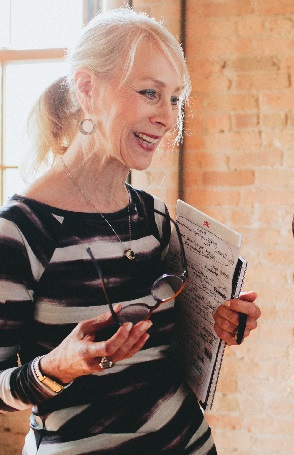DJHP / Leaders
Today’s workforce looks a lot different than it did even two years ago. Between 2013 and 2015, the number of Millennials in the workplace surpassed that of both Gen Xers and Boomers. We’re now looking at nearly 54 million Gen Yers employed in the U.S. That’s more than one-in-three workers.
With this change comes a shift in priorities. No longer is job security, compensation, or time off the most important reasons to take a job. It’s culture, and for many companies, culture is their greatest challenge.
Today’s employees want to work for an employer that has a clear vision of its values.

They want to know that their work has meaning — and if not the work itself, then that the company is doing something greater to benefit the community at large.
In other words, your company culture is more important than it ever was before.
To attract, retain, and engage today’s workforce, you need to develop a strong culture. And this often starts by asking yourself, “ What do my employees value in their jobs?”
But don’t just look to Millennials. You need to be inclusive with your culture, so take stock in what all those non-Millennials value in their jobs, too.
When actively developing your culture, I suggest you consider the following:
1. Seamlessness. Work and life are seamless for the younger generations. Seamlessness often means finding ways to add more flexibility into the work environment. Consider instituting flexible work hours or providing the option to work from home or another location a couple days a week. For many of today’s workers, flexibility can be even more important than compensation. It allows for more than just a work-life balancebut a work-life integration.
2. Development. Beside flexibility, today’s workforce is also looking for organizations that offer professional development opportunities — for both Millennials and non-Millennials alike. But a very unique advantage comes with this multi-generational labor force. You can rely on your established workers to share their wisdom with the younger generations. Think of it as your “legacy” factor, and this mentorship can create even more meaning for those in their latter years of a career.
3. Diversity. There’s a rapid cultural influx occurring in the modern workplace, and it’s critical that you embrace it. Embracing diversity does more than make you an inclusive organization, which is already a good thing. It also allows you to attract talent with skills you may not otherwise have in your workforce. You’re able to grow and expand in new and different ways.
4. Alignment. Your culture shouldn’t just focus on the benefits for your employees. They should also be tied to company outcomes. If your objective as a company is to innovate and disrupt the marketplace, look for ways to incorporate this into your company culture. The same can be said for employee retention, intergenerational connections, or even profits. Consciously tying your culture to outcomes ensures that it will fit with your company, not go against it.
Though Millennials may be the reason culture has grown in importance, you must remember that it isn’t just for them. You build it with all employees in mind. Take these suggestions and use them as a starting point. As you develop your culture, seek input from those who work for you, and you’ll surely end up with a strong culture based on growth and development for all.
RELATED ARTICLES /

Dr. Jan Hoistad
Lead Coach. Business Development Consultant. Thought Leader. Entrepreneur. Author. Dr. Jan Hoistad is passionate about helping professionals, business owners, partners, and teams develop the skills necessary to achieve success and fulfillment in both their occupational pursuits and personal lives.With 35 years of experience, Dr. Hoistad has been a pioneer in the field of professional coaching. She’s advised countless CEO’s, executives, business group heads, emerging leaders, partners, teams, and professionals in career transition and business development, teaching them how to dig deep, and sometimes loosen up, so they can start living by their values, finding their purpose, and achieving their professional and personal goals with intent and confidence.By helping professionals see that personal wholeness is a means to achieving optimum professional performance, Dr. Hoistad provides her clients the tools to become catalysts for change in their own businesses, careers and lives. They learn to leverage their strengths, build on their expertise, and expand their influence to become true innovators in their fields.
Latest posts by Dr. Jan Hoistad (see all)
- Three Ways to Advance Your Career - October 7, 2024
- How to Take Your Business to the Next Level - October 3, 2024
- Coaching for Business Partners: 4 Times to Work with a Skilled Business Relationships Coach - September 12, 2024
